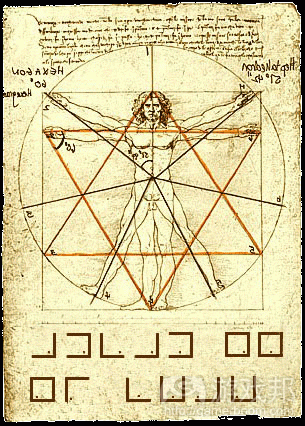阐述以斐波那契原理设计游戏的方法
作者:Mike Birkhead
“不断添加内容直到情况开始变得糟糕,拿掉内容直到它不再往好的趋势发展。”
优秀的系统会找到保持玩家不断猜测以及内容简单化之间的平衡;这意味着开发者既知道该提供给玩家多少选择,也知道何时该停止添加选择(不管它们多酷)。这包含游戏中有多少武器,多少才能之树,或者玩家会遇到多少怪物等等。
像这样的情况很少会有完美的答案,而这种无限的可能性让我的大脑停止了工作。在空白画布上留下第一笔可能是最困难的,所以我总是会尝试着去限制自己的选择。
你可能在大学的数学课上学过斐波那契序列,它就是:
1,1,2,3,5,8,13,……
我在自己的游戏设计中应用了这一序列:三法则(扩充版)和《黄金比例》。
三法则(扩充版)
最初使用斐波那契序列的游戏设计是三法则。数字3在游戏设计中(游戏邦注:包括其中的每一件事物)是一个特殊的数字。它会出现在任何地方,例如3个技能树,3个回合,3个成员等等。
我不在乎你在设计什么,如果你可以通过分解,划分或删减事物而得到3份内容,那么这便是一个很好的决定。你的游戏将会因此变得更好。这是一种承诺。我知道它可能会显得较为粗糙,你会因为失去某些内容而难过,但是玩家并不知道你从游戏中删减了什么,他们看到的只是最终产品。
三法则是一个非常普遍且可应用的方法,它将成为你的工具箱中最强大的一种技巧。人们将对你能够创造出简单,清晰且讲究的系统感到惊讶,他们也并不清楚你所做的只是专注于3这个较小的数字。3这个数字真的很强大。你可以看到它突然出现在所有不同的领域:
摄影——三分法
写作——三法则
经济——三分律
项目估计——不管你是如何估算时间都离不开3这一元素
但我也承认,有时候将所有内容分成3部分并不合理,而这时候它的两个朋友就该发挥作用了,即2和5。
这只是基于2,3和5的元素的系统。它们看上去很合理。你将会觉得自己拥有选择,但却不会被这些选择压得喘不来气。你将会注意到这些数字都属于斐波那契数字(即2,3,5),而这也不是一种巧合。
因为当你提供给玩家5种选择时,有人便会说:“为什么不是6种?”因为这会导致游戏的膨胀。越多并不总是代表越好;实际上这么做通常都是错误的。
当我们想着添加一些内容到游戏中时,我便会将自己限制在斐波那契序列中,它将推动着我真正思考“只多一个”的想法,就像现在它不仅仅是再多一个,而是再多几个。举个例子来说吧,如果我现在提供5种选择,然后我会将其升级为8种选择;并在之后又升级为13种。就像你所看到的,提供玩家选择的选择将变得越来越高:这里存在着一个教训。
如果你能够按照这一做法进行选择设置,你的设计将变得更加出色。
黄金比例
在关卡50vs关卡30中玩家需要多少游戏体验?在关卡20中又需要多少体验?
你至少需要在自己的职业生涯中解决一次该问题。而如果你变成一名系统设计师,你可能就会多次面临该问题,这也是另一个有关空白画布的问题。你所设置的体验并没有上限。而如果是考虑到游戏规模设置,如何控制收益以及系统所呈现出的感觉等等,这便是一个问题所在。当然,你所做出的选择都会让你的生活变得更加复杂。
现在,从我个人角度来看,我更偏向以指数方式增长的系统。我喜欢在一开始快速获取关卡,如此你便能够使用巴甫洛夫奖励系统。
但是我们该如何以指数的方式增加内容呢,并且是基于怎样的比例?进入黄金比例。
选取斐波那契序列中的任何数字N,将其除以序列中排在其前面的数字N-1。当N接近无穷大时,你通过除法所获得的数字将越接近黄金比例。你可能想知道这将如何与斐波那契序列维系在一起。这真的很有趣,但是它该如何发挥作用?
黄金比例与三法则一样,会突然出现在任何领域:
人体比例
鹦鹉螺壳的螺旋
银行的旋涡星系
灯开关的矩形图形工具
从一些非常小的内容到一些非常大的事物都能看到黄金比例的身影。任何使用过该比例的人都知道我该朝着怎样的方向前进,所以让我们能够赶上你的脚步。我们的目标是创造一个等式去估算玩家在任何特定关卡中需要多少体验,并且我们希望该体验以指数的方式增长。以下是我在过去使用过的例子(系数和指数是常量)。
奖励=系数*(黄金比例^(关卡+指数))
现实总是会偏离这一等式,特别是当系统开始进行互动,但这通常都是一个很好的开始。你可能会说怎么不列举一些有关使用斐波那契游戏设计的现实例子?让我们着眼于《MK9》。
例子应用
当我在为《MK9》设计挑战塔时,我遇到了一个突出的问题。玩家本应拥有300个完全不同的任务,他们需要赚得足够的钱去完成这些任务,他们应该能够花钱略过那些自己不喜欢的。任务,并且它需要所有内容能够适应更大的经济全局。
我需要解决的第一个问题是关于如何分解任务。我决定基于同样的角色而分解出5个任务组块。基于该方法我可以为玩家增加难度,他们将获得足够的时间去熟悉角色控制。在每个组块间将有一个小游戏,如此分解游戏玩法将能够保持内容足够有趣。
我还想呈现一些特别或有趣的任务,并且这么做便意味着在每30个任务间会出现一个很酷的任务。
当我将所有内容分解成自己的任务组块时,我便开始进入下一个阶段,即基于它们的难度按照1至5的范围为其进行系统的排列。我们很难在真空中完成这样的估算,所以这时候就需要求助其他人的帮助。你总是最不能有效地判断自己的难度峰值。
顺便说一句,我一直在研究人们使用了怎样的游戏玩法创意,不同角色出现了多少次,这发生在什么地方,游戏使用了怎样的淘汰机制等等问题。任务总是在不断转变着,所以记录这些内容是一份需要投入全部时间与精力的繁琐工作,但却是非常有价值的。
最后,既然我已经拥有所有安排有序的任务,我将开始使用自己所创造的5点难度范围为其分配奖励价值,即源自如下公式:
奖励=50*(2^难度)
我将获得从100开始的整数。最终结果看起来可能是随机的,但是你将看到在每个阶段我都会明确内容的组织,更重要的是你将会在设计中注意到2,3和5这些常数的出现。这都是故意这么设置的。
结果
“当我们必须在一个严格的框架中工作时,想象力将被推向极限,并创造出最棒的理念。而基于最大的自由的工作将可能无计划地蔓生着。”
没有结构的设计只会杂草丛生。这是我们都清楚的事实,但却很难真正做到。作为一名设计师这意味着你拥有一个爱做梦的心,或者你在一开始并不会做这份工作。如果我们添加更多内容是否意味着更好呢?可能事实并非如此。
数字2,3和5并不是魔法飞弹,它们并不会突然将你的设计变得非常整洁;它们能做的便是保持内容的结构,就像我说的,在开始往空白画布上绘制内容时,一点点的限制会更有帮助。
回头看看我在创造挑战塔时所面对的任务:面向各种不同游戏玩法创造300个任务。虽然我喜欢这些任务(你可能也是),但是这样的自由却很容易将你引向失败!我该如何开始?!
我会立即将斐波那契序列带向这一过程;并不是因为它会限制我的想象,而是因为它允许我的大脑去专注于真正重要的内容:提供给玩家最棒的体验。
对你来说亦是如此。斐波那契游戏设计是一种非常棒的方法。你可以将其用于自己所抨击的任何单一系统中,如此人们便会因为你创造了一个清晰,简单且有趣的系统感到惊讶。
(本文为游戏邦/gamerboom.com编译,拒绝任何不保留版权的转载,如需转载请联系:游戏邦)
Fibonacci Game Design
“Add things until it starts sucking, take things away until it stops getting better”
Good systems find a balance between keeping the player guessing and keeping things simple; this means both knowing how many options to provide the player, and knowing when to say no to something regardless of how cool. It involves things like how many weapons to have in the game, how many talent trees, or how many monsters to spawn in an encounter.
Situations like this rarely have the perfect answer, and that limitless possibility shuts my brain right off. That first brush stroke on a blank canvas can be the most difficult, so I always try to constrain my options.
You are probably familiar with the Fibonacci sequence from your college math classes, but if you need a refresher it looks like this:
1, 1, 2, 3, 5, 8, 13, …
There are two applications of this sequence that I apply to game design: the Rule of Three (extended edition), and the Golden Ratio.
The Rule of Three (extended edition)
The first use of Fibonacci game design is the Rule of Three. The number three is a special number in game design — in everything, really. It crops up everywhere: three talent trees, three rounds, three party members, etc.
I don’t care what you are designing, if you can break things down, divide things up, or cut things out so that it gets you down to threes, then it is a good decision. Your game will, in all likelihood, be better for it. That’s a promise. It will feel rough, I know, and you will mourn the loss from something from the game, but the player doesn’t know what you cut from your game, they only know the product.
The Rule of Three is so universal and applicable that it will probably be the greatest trick in your toolbox for a long time. People will marvel at your ability to create simple, clean, elegant systems, and little will they know that all you did was focus on that little number three. Look: I’m not crazy. The number three is just super powerful. You can see it crop up in all different kinds of fields:
Photography – Rule of Thirds
Writing – Rule of three
Economics – Rule of Three
Project Estimations – Even how you estimate your time if off by a factor of 3
But I admit, at times it won’t feel right to break things down to threes, and that’s where his two friends come into play: two and five.
There is just something about systems in twos, threes, and fives. They just feel RIGHT. You feel like you have choice, but you are not overwhelmed. You will notice, of course, that these are Fibonacci numbers — 2, 3, 5 — which is NOT a coincidence.
Here’s why: once you provide five options to the player it can be super easy to say, “why not six?” Sure, why NOT six. Well, because it bloats the game, dummy. More is not always better; in fact, it is almost always worse.
When I think about adding something to the game I constrain myself within Fibonacci’s beautiful sequence, for it forces me to REALLY commit to “just one more”, as now it is NOT just one more, but in fact several more. If, for example, I currently provide five options, then I would have to upgrade it to eight; for eight, thirteen. The choice to increase the player’s options, as you can clearly see, gets heftier and heftier: THERE’S A LESSON THERE.
Do this, and everything you design will turn up golden.
Golden Ratio
How much experience should the player need at level 50 versus level 30? How much at level 20?
You will face and solve this problem at least once in your career. Probably more than once, if you become a system designer, and it is another of those blank canvass problems. The experience caps you set can be almost ANYTHING. It’s simply a matter of how you want your game to scale, how you want to control your gains, and the feel you want for the system. Of course, certain choices you make can make your life more or less difficult.
Now, me personally, I prefer systems that grow exponentially. They just FEEL better to me. I like gaining levels really fast in the beginning, so you can get that Pavlovian reward system going.
But HOW do we grow something exponentially, and at what rate? Enter the Golden Ratio.
Take any number N from the Fibonacci sequence and divide it by the previous number in the sequence N-1. As N approaches infinity, the number you get from the division approaches the Golden Ratio. Ah HA, you say! You wondered when this would tie back to that Fibonacci fellow. This is interesting, but how is it useful?
The Golden Ratio, like the rule of three, crops up all over the place.
The proportions of the human body
The spiral of a nautilus shell
The spirals in the arms of are galaxy
The rectangular shape of light switches
From the very small to the very large it shows up, and there is something about it that we find pleasing. Where am I going with this? Anyone that has done this already knows where I’m headed, so let’s catch you up. Our goal is to create an equation to calculate how much experience the player needs at any particular level, and we want it to grow exponentially. Here’s an example of something I have used in the past as a starting point (Coefficient and Exponent are constants).
Reward = Coefficient * (GoldenRatio ^ (Level + Exponent))
Things usually deviate from this, especially when systems start interacting, but it’s usually a nice starting point with pleasing results. OK, you say, what about a real world example of how to use all this Fibonacci game design? Let’s take a look at MK9.
Example Applications
When I was designing the Challenge Tower for MK9 I was faced with a compelling problem. The player should have 300 completely different missions, they needed to get money for beating them, they should be able to buy their way passed missions they didn’t like, and it needed to all fit into the larger picture of the entire economy.
The first question was how to break up the missions. I decided on blocks of 5 missions that focused on the same character. This way I could ramp up the difficulty on a player, and they are given enough time to familiarize themselves with how that character controls. Between each block would be a minigame, which breaks up the gameplay to keep things interesting.
I also had some special or funny missions that I wanted to showcase, and doing it this way meant I could have a cool mission every 30 missions.
Once I had everything broken up into my mission blocks, I began the next phase of the process, which was to systematically rank them on how difficult they were on a scale of one to five. It is difficult to do this kind of estimation in a vacuum, by the way, so make good use of other people. You are always going to be the worst judge of your own difficulty spikes.
As an aside, I was also tracking the kind of gameplay gimmicks being used, how many times different characters occurred, what arenas it took place in, what kind of ring knockouts used, etc. Missions were constantly being shuffled around, and keeping this file maintained was a full time and commitment heavy job, but it was so worth it.
Finally, now that I had all the missions organized and categorized, I was ready to start assigning reward values to them, which, using the 5 point difficulty scale I already created, was output from the following formula:
Reward = 50 * (2 ^ Difficulty)
This gave me nice round numbers that started off at 100. The final outcome looks random, but you can see that at every step of the process I was making meaningful calls about how things were organized, and, more importantly, you probably noticed the constant appearance of 2, 3, and 5 in the design. That was all on purpose.
Bottom line
“When forced to work within a strict framework the imagination is taxed to its upmost — and will produce its richest ideas. Given total freedom the work is likely to sprawl.” – T.S. Eliot
Designs with no structure tend to sprawl. It’s something that we all understand, but it can be very hard to follow that advice. Being a designer means you have the heart of a dreamer, or you wouldn’t be doing the job in the first place. We like adding shit, because we traffic in a world of cool. Isn’t it better if we add more? Probably not.
The numbers two, three, and five are not magic missiles, however, and they won’t suddenly make your designs super clean; what they WILL do is help keep a structure to things and, like I said, a little bit of constraint can be very helpful when staring down the barrel of the blank canvas.
Look back to the original task I was given on the Challenge Tower: 300 missions of various gameplay. That’s it! Just 300 missions, go take care of it – gulp! I love tasks like that, though, and you probably do too; yet, such freedom can easily cause you to baulk. How do I start?!
Me, I immediately apply my Fibonacci structure to the process; not because it limits to my imagination, but because it allows my brain to focus on what matters: giving the player a good experience.
The same will be true for you. Fibonacci game design is a total Ace up your sleeve. You can apply it to almost every single system you ever attack, and people will marvel at your ability to create clean, simple, fun systems.(source:flarminator)









































 闽公网安备35020302001549号
闽公网安备35020302001549号